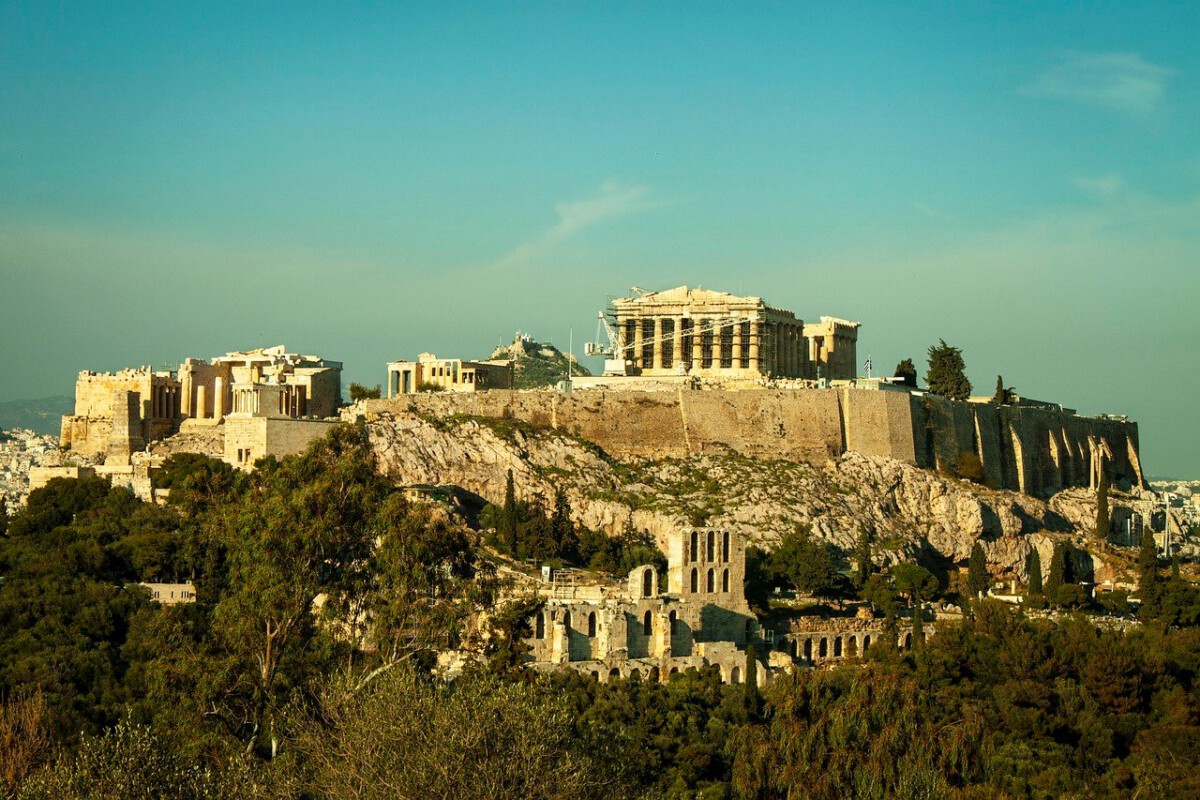Egypt: The Cradle of Civilization

Egypt stands as one of humanity’s most enduring civilizations, with a stunning legacy that reaches back over five millennia. The pyramids, especially the Great Pyramid of Giza, still leave people speechless and remain among the most recognized structures on earth. Egyptians invented writing systems, advanced mathematics, and made medical discoveries that laid the groundwork for later cultures. Even now, the Nile River is central to Egypt’s agriculture and daily life, just as it was for the pharaohs. In 2022, Egypt’s tourism industry saw more than 13 million visitors, demonstrating the enormous global draw of its historical treasures. The government has increased its efforts in sustainable tourism, aiming to preserve ancient sites for future generations. New archaeological digs continue to make headlines, revealing lost tombs and artifacts that add to Egypt’s mystique. Egypt’s ability to preserve its ancient wonders while moving forward with modern development is truly remarkable.
China: The Land of Dynasties

China’s roots stretch back to the Xia Dynasty around 2070 BC, making it one of the oldest continuous civilizations on the planet. The Great Wall, a breath-taking monument built over centuries, stands as a symbol of China’s resilience and ingenuity. With a current GDP surpassing $17 trillion in 2022, China’s economic influence is only growing stronger. Ancient practices like calligraphy and traditional festivals remain vibrant parts of daily life, even as the country surges ahead in technology and infrastructure. Archaeologists recently uncovered relics from the Sanxingdui civilization, shedding new light on China’s mysterious early history. The government actively supports the restoration and protection of sites like the Forbidden City and the Terracotta Army. Museums and cultural projects attract millions of international visitors each year. China’s blend of the ancient and the futuristic makes it one of the world’s most fascinating countries.
Greece: The Birthplace of Democracy

Greece is celebrated as the birthplace of democracy, philosophy, and the Olympic Games, and its influence still echoes through modern Western culture. The ruins of Athens and Delphi attract millions of tourists, with the country reaching a record 30 million visitors in 2022. Greek thinkers like Socrates, Plato, and Aristotle shaped the way people reason and debate even today. The country’s Mediterranean cuisine and idyllic islands add to its allure, drawing travelers from every corner of the globe. Restoration projects are underway at ancient sites like the Parthenon, ensuring these wonders remain for future generations. Artifacts continue to be unearthed, offering fresh insights into ancient Greek daily life and society. The Greek government has prioritized heritage conservation, recognizing the importance of its history to national identity. Greece’s unique mix of myth, beauty, and intellectual legacy makes it endlessly captivating.
India: A Tapestry of Cultures

India’s story begins with the Indus Valley Civilization, one of the world’s first urban societies, dating back to 2500 BC. Today, India is a dazzling patchwork of languages, religions, and traditions, home to over 1.4 billion people. The Taj Mahal stands as a symbol of love and architectural mastery, drawing millions of visitors every year. In 2022, India welcomed more than 18 million international tourists, boosting its growing economy. The country is a leader in IT and technology, yet its ancient temples and festivals remain central to life. Recent archaeological finds in Gujarat have uncovered new ancient cities, sparking excitement among historians. Heritage conservation is a top priority, with the government balancing modernization and tradition. India’s deep sense of continuity and vibrant culture make it a living museum of world history.
Iran: The Legacy of Persia

Iran, known in ancient times as Persia, boasts a history that stretches back to the mighty Achaemenid Empire of the 6th century BC. The ruins of Persepolis leave visitors awestruck, standing as reminders of a glorious past filled with artistic and scientific achievement. Despite political obstacles and international tensions, Iran’s cultural legacy shines through in its literature, architecture, and traditions. In 2022, more than 6 million tourists visited Iran, many drawn by its breathtaking mosques and ancient cities. The government has launched efforts to promote cultural tourism and safeguard historic landmarks. Recent discoveries include ancient artifacts and palaces that offer glimpses into the sophistication of Persian society. Iran’s people take immense pride in their heritage, which remains a unifying force amid modern challenges. The preservation of Persian identity is treated as a national treasure.
Italy: The Heart of the Roman Empire

Italy is inseparable from the legacy of the Roman Empire, whose influence shaped the Western world for centuries. The Colosseum in Rome, the ruins of Pompeii, and the Renaissance city of Florence are magnets for history lovers—the country welcomed over 65 million tourists in 2022. Italian art, architecture, and cuisine are world-renowned, with cities like Venice and Milan serving as cultural icons. The government invests heavily in the preservation of archaeological sites, balancing tourism with the need for conservation. Ongoing excavations frequently reveal new insights, such as recently unearthed Roman villas and frescoes. Italy is also focused on sustainable tourism, protecting both its historical and natural treasures. Italian festivals and traditions provide a continuous link to the past, making history feel alive and accessible. Italy remains a place where ancient and modern worlds blend seamlessly.
Mexico: The Echoes of Ancient Civilizations

Mexico’s story is shaped by the mighty civilizations of the Maya and the Aztecs, whose temples and cities still stand in awe-inspiring ruins. UNESCO sites like Teotihuacan and Chichen Itza attract millions—Mexico saw over 40 million international visitors in 2022. Archaeologists have recently uncovered new Mayan cities, fueling global fascination with pre-Columbian culture. The Mexican government prioritizes both preservation and public education, running campaigns to protect ancient sites from environmental damage. Mexican art, music, and cuisine reflect the fusion of indigenous and Spanish influences, creating a rich cultural tapestry. Festivals like Day of the Dead keep ancient traditions alive in spectacular fashion. New museums and interactive experiences make history accessible even to younger generations. Mexico’s commitment to its heritage ensures that the echoes of its past continue to inspire.
South Sudan: A New Nation

South Sudan became the world’s youngest country in 2011, emerging from decades of conflict with hope and determination. The road since independence has not been easy, with ongoing challenges related to peace and economic growth. The nation’s GDP was around $4 billion in 2022, and there are ongoing efforts to rebuild infrastructure and foster unity among its diverse population. South Sudan is incredibly rich in natural resources such as oil, which holds promise for its future development. The government and international partners are investing in education, healthcare, and peacebuilding initiatives. Despite hardship, traditional culture remains strong, with vibrant music, dance, and storytelling. Local festivals and rituals serve as powerful reminders of community and resilience. South Sudan’s journey is marked by both struggle and hope for lasting peace.
Kosovo: A Young Republic

Kosovo declared its independence from Serbia in 2008, making it one of Europe’s youngest nations. The country has worked hard to establish its political and economic identity, with a GDP around $8 billion in 2022. Kosovo’s landscape is dotted with medieval monasteries and Ottoman-era architecture, reflecting a complex and multicultural history. The government is focused on building strong institutions and attracting foreign investment to spur growth. Tourism is growing, with more visitors drawn to the capital Pristina and scenic mountain regions each year. Music, art, and contemporary festivals help shape Kosovo’s modern identity while honoring its heritage. International recognition is still a challenge, but the country pushes forward with optimism. Kosovo is a testament to the resilience of a people determined to create a future of their own making.
Timor-Leste: A Nation Reborn

Timor-Leste, also known as East Timor, won independence from Indonesia in 2002 after years of struggle and sacrifice. The country’s GDP stood at about $2 billion in 2022, and leaders are focused on economic development and building a stable democracy. Timor-Leste is famous for its stunning beaches, coral reefs, and mountainous landscapes, which the government is promoting through sustainable eco-tourism. Cultural festivals celebrate the country’s unique blend of Portuguese and indigenous traditions, keeping history alive for a new generation. Recent investments in infrastructure aim to connect remote communities and attract international investors. The nation’s education and healthcare systems are improving, with support from international organizations. Timor-Leste’s people take great pride in their identity, shaped by resilience and hope. The country’s ongoing journey is one of rebuilding, unity, and growing confidence.








